#Steven Brodner
Photo
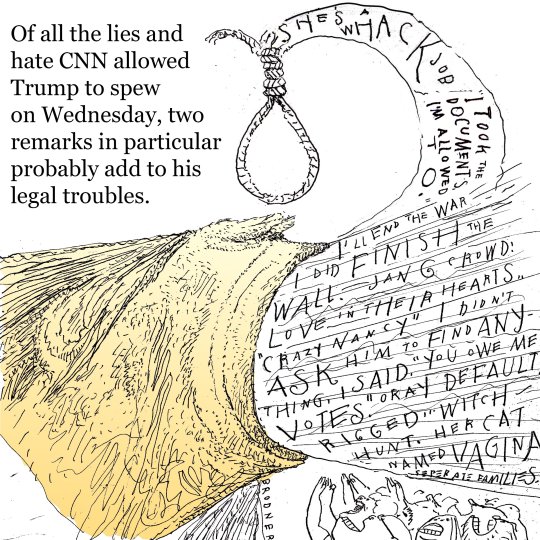
[The Moment That You Knew :: What CNN’s disastrous town hall showed us.]
CHARLIE SYKES :: MAY 11, 2023
Even the folks at CNN seemed to recognize how bad it was. “It’s hard to see how America was served by the spectacle of lies that aired on CNN Wednesday evening,” Oliver Darcy, the network’s senior media reporter wrote in CNN’s Reliable Sources newsletter. “It felt like 2016 all over again. It was Trump’s unhinged social media feed brought to life on stage.”
But let’s be clear about this: last night was not Kaitlan Collins’s fault. The decision to amplify Trump’s firehose of disinformation on live television doomed the whole thing from start. As Mehdi Hasan writes today, the “ridiculous town hall format and an audience seemingly recruited ‘from the Mar-a-Lago parking lot’, put its own anchor in a position to fail.”
Her bosses at CNN should have known that, but they made it clear last night that they had learned nothing. Or simply didn’t care.
Increasingly, Chris Licht is to CNN what Elon Musk is to Twitter.
The network’s defenses for all of this are bullsh*t on the surface. Of course, CNN needs to “cover” and report on the frontrunning GOP candidate. He’s news.
But this was not journalism we saw on CNN last night: this was entertainment programming, the kind of reality television show that did so much to foist Trump onto the body politic. He owned last night’s format.
In a different format, Collins could have performed a flagrant act of journalism. She could have done an in-depth taped interview with the former president, the sort that Jonathan Swan has done. She could have been given the chance to ask detailed follow-up questions, like Mehdi Hasan might do. CNN could have edited the responses, rather than simply air one lie after another.
Instead, well, you saw it… (via Rex Hupke):
Sexual abuse, like the kind a jury just found Trump liable of? That’s a laugh line for these folks. Literally. They laughed during CNN’s town hall as Trump continued to likely defame E. Jean Carroll, the woman he was just found liable of defaming.
The Jan. 6 domestic terrorist attack on the U.S. Capitol? Trump said he’ll swiftly pardon most of the now-imprisoned attackers, possibly even some of the Proud Boys who were convicted of seditious conspiracy, because they’re “great people.” And that brought applause from the crowd.
A rat-a-tat-tat string of lies about the “rigged election”? The crowd chuckled.
A lie about “finishing” the border wall he barely started? You know, the one Mexico didn’t pay for. The crowd applauded.
Lie, lie, lie, lie, lie. Laugh, applaud, chuckle, clap, cheer.
This was the moment we knew.
We knew who Trump was of course. But last night showed us who we are and what’s about to happen. This is the GOP frontrunner.
He is still the star who can do anything. And it will get worse.
“Listen,” wrote author Jared Yates Sexton, “if this town hall is any indication, and I think it is, the Trump Campaign of 2024 is going to be infinitely more disturbing and upsetting. I've spent a lot of time studying this man and his movement. I'm stunned by the depths here. This is . . . awful.”
5 notes
·
View notes
Photo










Protesting Racism And Hate With Political Art by: Steven Brower
Image attributions in order:
Edel Rodriguez’s “Take It Down”
Steve Brodner cropped his earlier image to increase the impact
Carolyn Sewell drew on top of “The Washingtonian”
Trump 24K Gold Plated Poster, Designed by Mark Fox and Angie Wang (Design is Play) from the new ‘The Design of Dissent, Expanded Edition’ book by Milton Glaser and Mirko Ilić
Mike Mitchell
“The Stain in Chief” by Victore
Brian Stauffer
John Berkeley
David Plunkert
Bob Staake, political art, Arlen Schumer
#political art#45#Trump#trump's america#donald trump#white supremacists#neo-nazis#white supremacy#steven brower#edel rodriguez#steve brodner#carolyn sewell#milton glaser#mirko illic#mike mitchell#victore#brian stauffer#john berkeley#david plunkert#bob staake#arlen shumer
27 notes
·
View notes
Text
9/4
Reading Response
I enjoyed reading about designers like Steven Guarnaccia and Steve Brodner and their use of illustrations because I resonate with it. When creating graphics for The Daily Gamecock, I often get discouraged because I love to illustrate everything. Although I know there are many short cuts for creating shapes in Adobe Illustrator, I prefer to draw the lines myself. It feels more “mine.” I enjoy seeing work done by other designers that manipulate existing photos, however it excited me to learn about successful graphic designers that have a passion for digital illustration like I do. I especially liked the work of “graphic artist” Neil Gower. I’ve done a lot of digital illustrations depicting people. I know from experience that human features such as hands are quite difficult. I admire that he can portray many different looking people in many different scenarios and style types.
Work Reflection
I tried to incorporate denser stippled areas in my stippling square, as suggested in my critique. I hope I put that idea to good use! It was interesting trying to improvise when making the geometric shapes for square D. I had to find different circular objects around the house in order to make a perfect circle. for the pot, I used the cap of a jar of honey. I also once again used my makeshift light table. For squares D-F, I played around with a lot of different ideas (pictured at bottom). I believe I chose the strongest ones to include in my weekly progress collage (top).
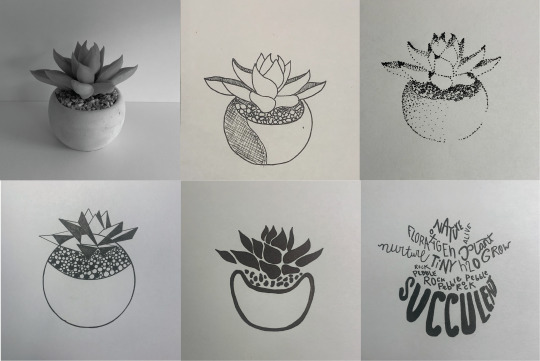
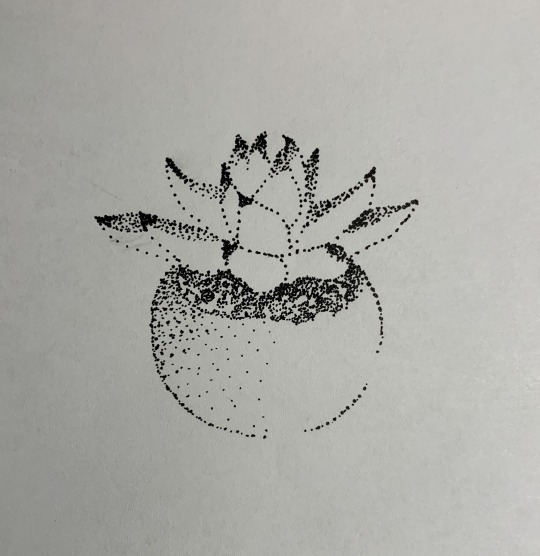


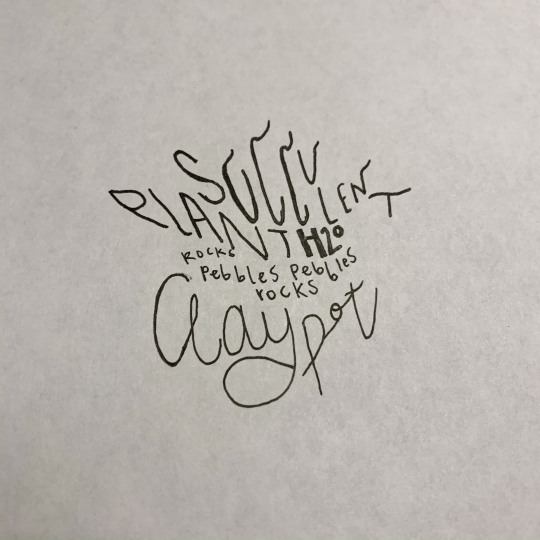
0 notes
Text
— CHAPTER 10 —
Michel Bouvet’s style is reminiscent of pop art. He likes having a simplistic image while using bold strokes, bright silk screened colors, and a dot pattern. I have always been a fan of Andy Warhol and although Bouvet doesn’t come close to Warhol’s talent, I still think that it’s pretty awesome.
“The better known you are as a. Illustrator with a certain style, the harder it is to change directions. Big ships require much more time and energy to turn around,” Mirko Ilic says. As a designer, you have to market and sell yourself differently sometimes to fit different needs. However, you are often able to keep your authenticity.
Steve Brodner is big on political cartoons. His work is sensitive to current affairs. I’m not a fan of it. Period.
I can relate heavily with Steven Guarnaccia and his opinion on digital media being a part of his creative, professional life. Researching online for general inspiration is so important. Having ideas is more important than having talent.
Neil Gower sees illustrating and lettering as a viable future. That gives a certain piece of mind to potential designers like me. There are lots of careers, jobs, and professions that become obsolete in this world, but people will always need to communicate.
The way that Craig Frazier starts and finishes a piece of work really mesmerizes me. He starts off sketching with Micron pens and Moleskine notebooks, cuts out his illustrations, scans them into the computer, and colors them in Photoshop. “Start analog; finish digital.” I think that’s not only smart, but really neat.
0 notes
Text
chapter 10 summary
In Chapter Ten many different graphic design artists was introduced. The first person was an artist, Michel Bovet who was a French native and poster designer. He was questioned about his journey and his outlook on Pop Art plus many other interviewing questions based on his talent and particular style. Another artist that was mentioned in the chapter that caught my eye was Mirko Iliot. He was a European who illustrates comics and simple illustrations. He worked for TIME Magazine and also hit many accomplishments such as establishing his own firm and received many awards for his work. One of the pieces that he illustrated was an article shaped into the star of David. I thought that was super cool and creative especially since the article had to do with the ADL Unfire and Clinton. Steven Brodner was also an artist that was really talented with sketch illustrations. Personally, he is my favorite out of the many that were mentioned because we have somewhat of a similar process. This chapter was pretty informative and helped me with my thinking process and the different techniques that I want too pick up on and be able to add on to my talents.
0 notes
Text
Weekly Reading-Ch10
It’s very eye opening reading about various artists and how they label themselves. In this week's reading, many of the artists did not call themselves graphic designers but rather illustrators or free-lance designers or just a combination of titles. Many of these artists in the reading still do a lot of illustrations on paper, not on computers. With today's technologies and everything being online, I find it actually very humbling reading that. As important as it may be to keep up to date with society and technology, these artists can still create amazing works and get published in countless magazines but stick to their traditional methods of design. First off, I felt oddly drawn to Michel Bouvet’s uncanny, weird posters. He even admits how strange they are but knows that they somehow work for the companies he works for. His designs seem like they are a lot of fun to work on and seeing them unfold and succeed to the public. On another note, I was very intrigued by Micro Ilic’s lifestyle of never sticking to the same design methods/ aesthetics. I think this is super important as a designer because it opens your creativity up to different aesthetics, that way you, as the designer, can create anything for anyone. On another note, Steven Brodner and Steven Guarnaccia gave me some very good inspiration as a designer. Brodner mentioned to basically always stay true to yourself, whether personally or within your work, and second, figure out your niche/ aesthetic before you start creating as a professional. As intriguing as it is to hop all over the place like Ilic, it’s also very important to know your strengths and thrive off of them for potential clients. Guarnaccia’s advice was to self-publish before all the editors and publishers get in the way of your path or destiny. I feel like you will know yourself and figure yourself out better when you publish yourself without the help of big name editors. Finally, I adored Craig Frazer’s designs and how simple yet detailed they are. His process of creating; drawing multiple sketches then finally editing it on the computer, reminded me a lot of what this current project entails. It is always fascinating reading about other designers and seeing their creations. Graphic designers all have such a wide range of aesthetics and everyone can succeed in life with their own aesthetics rather than conforming to society.
0 notes
Text
Reading Response to Chpt 10: Becoming a Graphic and Digital Designer
I thought that the reading this week was very interesting. I enjoyed reading all of these illustrators/ graphic designers’ perspectives in the field, even if some would not even call themselves an illustrator or a designer. I thought that both Steven Guarnaccia and Steve Brodner were two of the artists that stood out to me the most in this chapter. I took an interest in reading Brodner’s interview because he discussed how he used comics to portray his form of storytelling with his political comics and illustrations and how you need to sell yourself and others on your “brand”. I also thought Guarnaccia’s interview affected me a lot while reading it, as an aspiring illustrator, one of my ultimate goals in life is to, hopefully, illustrate children’s books. I thought that seeing his youthful style and reading how he is constantly filing his life with new things and projects and how he drew for books but also designed actual objects such as ties, was very enlightening to me and made me want to be like him in some aspect of my life.
0 notes
Text
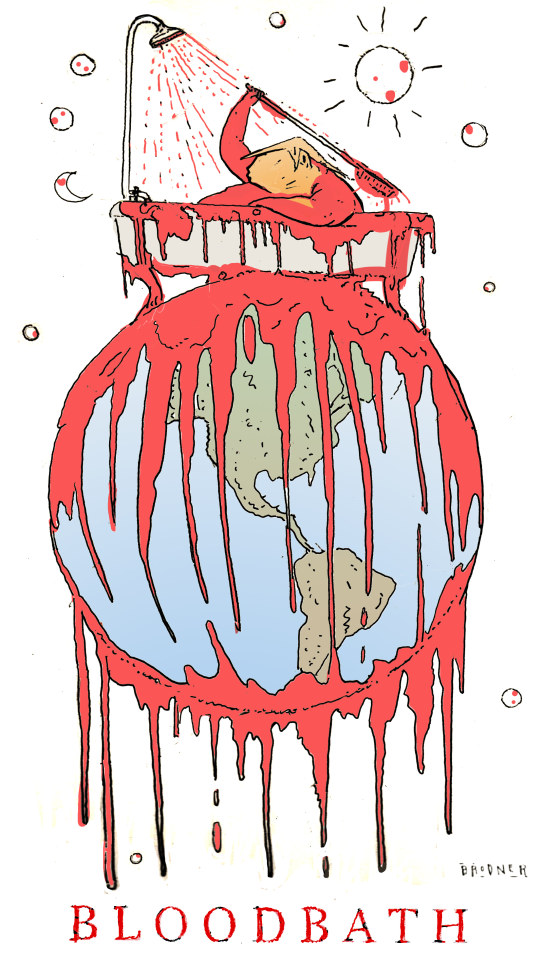
Stephen Brodner
* * * *
LETTERS FROM AN AMERICAN
March 18, 2024
HEATHER COX RICHARDSON
MAR 19, 2024
It seems to me that the news tends to be slow on weekends during the Biden administration, while Mondays are a firehose. (In contrast, Trump’s people tended to dump news in the middle of the night, after Fox News Channel personality Sean Hannity’s show was over, which may or may not have been a coincidence.)
So, lots going on today as the Biden administration continues to make the case that a democratic government can work for ordinary Americans while Trump and his supporters insist that a country run by such an administration is an apocalyptic nightmare.
First, economic analyst Steven Rattner reported today that according to The Economist, since the end of 2019 the American economy has grown about 8%, while the European Union has grown about 3%, Japan 1%, and Britain not at all. Rattner and economist Brendan Duke reported that entrepreneurship in the U.S. is booming, with 5.2 million “likely employer” business applications filed between January 2021 and December 2023, more than a 33% increase over those filed between 2017 and 2019.
Economists Justin Wolfers and Arin Dube noted that, as Wolfers wrote, “[f]or the first time in forever, real wage gains are going to those who need them most.” Wages have gone up for all but the top 20% of Americans, whose wages have fallen, reducing inequality.
Federal Trade Commission (FTC) head Lina Khan announced that after the FTC challenged a set of AstraZeneca inhaler patents last September as being improperly listed, today AstraZeneca said it would cap patients’ out-of-pocket costs for its inhalers at $35, down from hundreds. Earlier this month, Boehringer Ingelheim did the same.
The Environmental Protection Agency today announced it was banning asbestos, which is linked to more than 40,000 deaths a year in the U.S. and was already partly banned, but which is still used in a few products. More than 50 other countries already ban it.
Also today, President Joe Biden issued an executive order to advance women’s health research to integrate women’s health into federal research initiatives, strengthening data collection and making funding available for research in a comprehensive effort to equalize attention to men’s and women’s health across their lifespans. The federal government did not require women’s health to be included in federally funded medical research until 1993. In a speech today, First Lady Jill Biden recalled that in the early 1970s, researchers studying estrogen’s effect in preventing heart attacks selected 8,341 people for the study. All of them were men.
Last month, First Lady Biden announced $100 million in funding for research into women’s health, and last Thursday Vice President Kamala Harris visited a Planned Parenthood clinic that provides abortion care in addition to breast cancer screening, fibroid care, and contraceptive care. She noted that women’s reproductive health has been in crisis since the Supreme Court overturned Roe v. Wade in June 2022, with women in some states unable to access the care they need.
Former president Trump, who is now the presumptive Republican presidential nominee, prompted some of the economic reporting I noted above when he tried to spark attacks on President Joe Biden by asking on social media if people feel better off now than they were four years ago. This was perhaps a mistaken message, since four years ago we were in the early days of the coronavirus pandemic. Supermarket shelves were empty, toilet paper was hard to find, healthcare professionals were wearing garbage bags and reusing masks because the Trump administration had permitted the strategic stockpile to run low, deaths were mounting, the stock market had crashed, and the economy had ground to a halt.
On this day four years ago, I recorded that “more than 80 national security professionals broke with their tradition of non-partisanship to endorse former Vice President Joe Biden for president, saying that while they were from all parties and disagreed with each other about pretty much everything else, they had come together to stand against Trump.”
Here in the present, Trump appears to be getting more desperate as his problems, including his apparent growing difficulty speaking and connecting with his audience, mount. Last week, in an interview, he echoed Republican lawmakers and pundits when he suggested he was open to cutting Social Security, Medicare, and Medicaid, something Republican lawmakers try to avoid saying to general audiences because it is hugely unpopular. Trump has since tried to repair that damage, for example, when he insisted on Saturday that it was he, rather than Biden, who would protect those programs. (In fact, Biden has called for expanding the social safety net, not contracting it, and last year forced Republicans to back off from proposed cuts.)
Saturday’s speech illustrated the degree to which Trump’s rhetoric has become more profane and apocalyptic as he vows revenge on those he sees as his enemies. Campaigning in Vandalia, Ohio, for his chosen Senate candidate, Trump suggested that certain migrants “are not people.” Then he said he would put tariffs of 100% on cars manufactured in Mexico by Chinese companies for sale in the U.S., “if I get elected. Now, if I don't get elected, it's going to be a bloodbath for the whole—that's going to be the least of it. It's going to be a bloodbath for the country.”
By Sunday, Trump’s embrace of the word “bloodbath” had created a firestorm. Surrogates insisted that he was talking about the auto industry alone, but as scholar of rhetoric Jen Mercieca and legal commentator Asha Rangappa note, Trump is a master at giving himself enough plausible deniability for his supporters to claim that, as Rangappa put it, “he wasn’t saying what he was saying. I know what he meant. He knows what he meant. You know what he meant.” In the same speech Saturday, Trump called those convicted of violence on January 6, 2021, “hostages” and “patriots,” and has said he would pardon them, appearing to endorse violence to return him to power.
This morning, Trump’s lawyers told a court that Trump cannot come up with either the money or a bond for the $454 million plus interest he owes in penalties and disgorgement after he and the Trump Organization were found guilty of fraud in a Manhattan court earlier this year. The lawyers say they have approached 30 different companies to back the bond, and they have all declined. They will not issue a bond without cash or stock behind it. Trump's real estate holdings, which are likely highly leveraged, aren’t enough.
Last year, Trump said under oath that he had “substantially in excess of 400 million in cash,” and that amount was “going up very substantially every month.” Apparently, that statement was a lie, or the money has evaporated, or Trump doesn’t want to use it to pay this court-ordered judgment on top of the $91.6 million bond he posted earlier this month in the second E. Jean Carroll case.
Timothy O’Brien of Bloomberg notes that Trump’s desperate need for cash makes him even more of a national security threat than his retention of classified documents made it clear he already was. “[T]he going is likely to get rough for Trump as this plays out,” O’Brien writes, “and he’s likely to become more financially desperate with each passing day,” making him “easy prey for interested lenders—and an easy mark for overseas interests eager to influence US policy.”
This morning, Josh Dawsey of the Washington Post reported that Trump is turning to his 2016 campaign manager Paul Manafort to advise him in 2024. Dawsey notes that the campaign’s focus appears to be on the Republican National Convention in Milwaukee in July, which suggests Trump’s people are concerned that his nomination will be contested. Manafort has been known as a “convention fixer” since 1976.
Manafort is also the key link between the 2016 Trump campaign and Russian operatives. Manafort worked for many years for Ukrainian politician Viktor Yanukovich, who was closely tied to Russian president Vladimir Putin. When Ukrainians threw Yanukovich out of office in 2014, Manafort was left with large debts to Russian oligarch Oleg Deripaska. In 2016, Manafort began to work for Trump’s campaign. An investigation by a Republican-dominated Senate Intelligence Committee into the links between Trump’s campaign and Russia determined that Manafort had shared polling data from the Trump camp with his partner, Konstantin Kilimnik, who the senators assessed was a Russian operative.
In 2018, as part of Special Counsel Robert Mueller’s investigation, Manafort was found guilty of hiding millions of dollars he had received for lobbying on behalf of Yanukovych and his pro-Russian political party, then getting loans through false financial records when Yanukovych lost power. A judge sentenced him to more than seven years in prison.
Trump pardoned Manafort in December 2020, shortly after losing the presidential election.
LETTERS FROM AN AMERICAN
HEATHER COX RICHARDSON
#Letters from An American#Heather Cox Richardson#normalizing pathology#Election 2024#Manafort#Stephen Brodner#bloodbath#economic news#social safety net#american foreign policy#TFG's money woes
6 notes
·
View notes